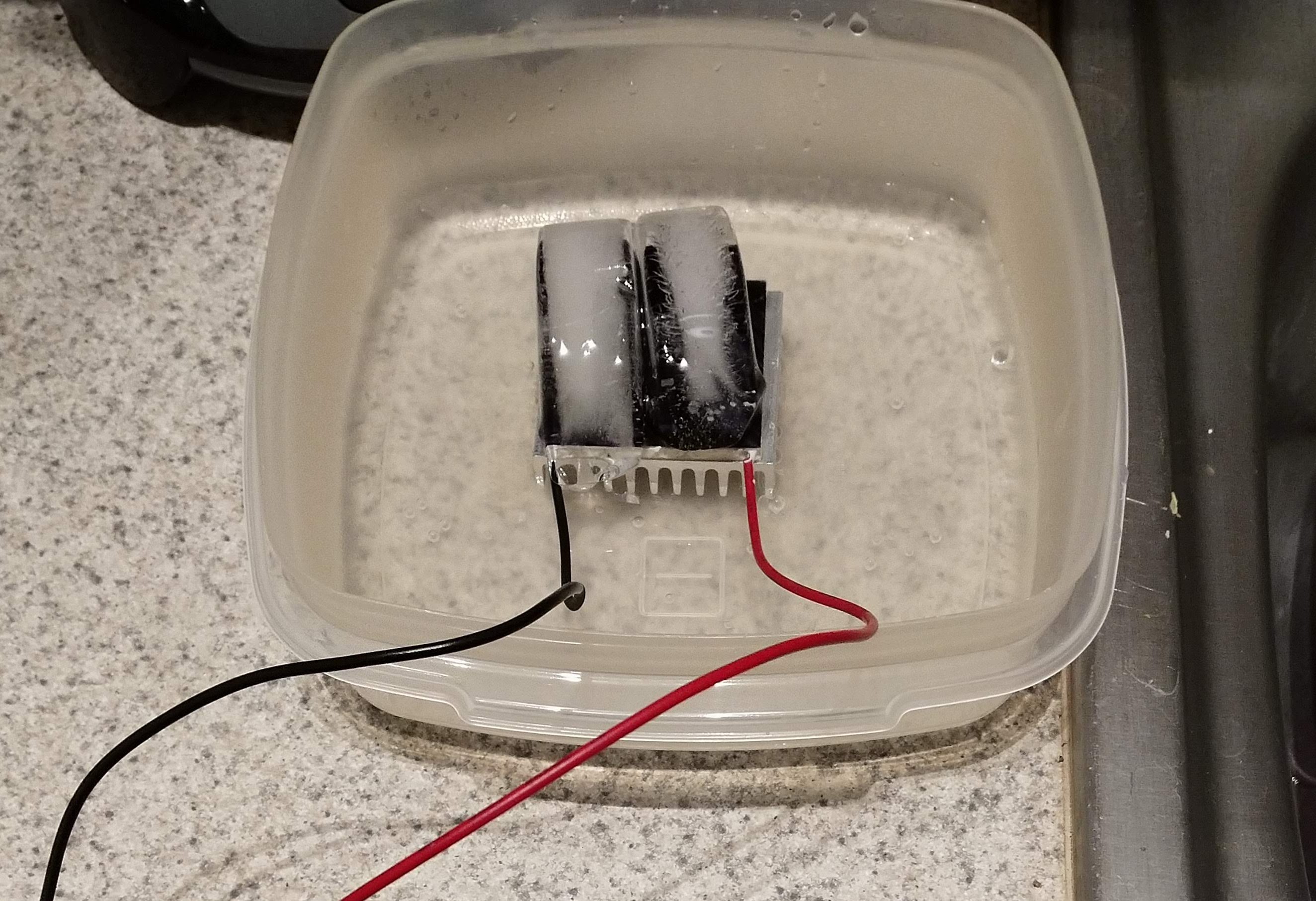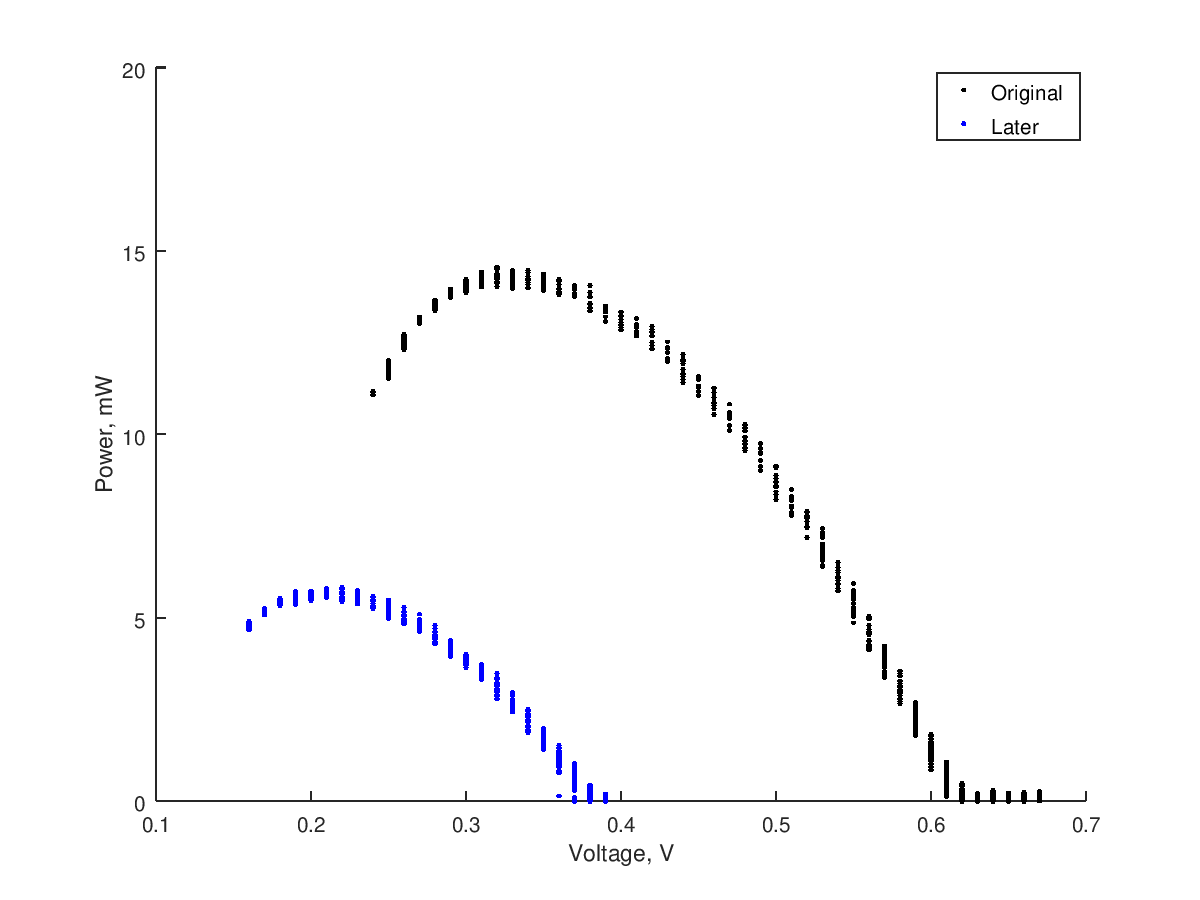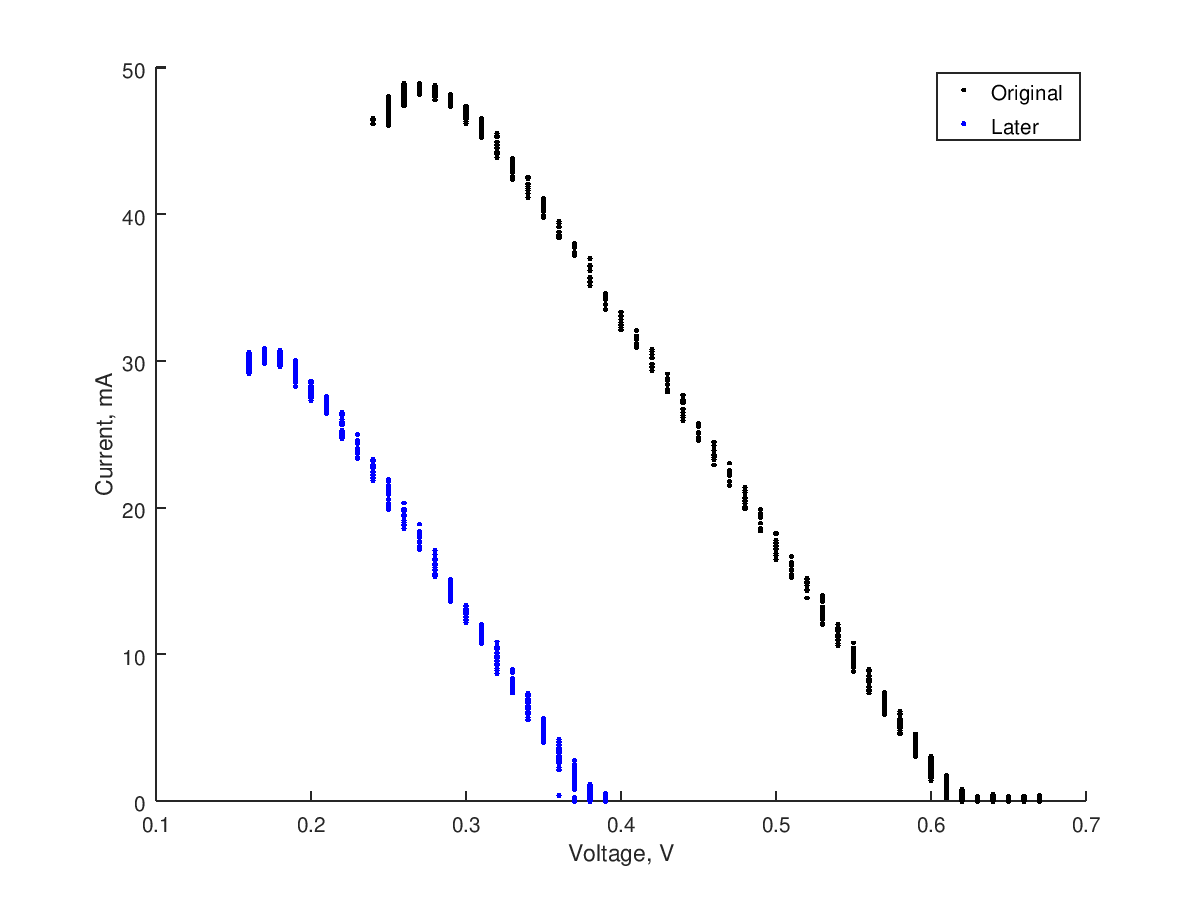The first step to determining the usefulness of low-cost Peltier cooler plates as a thermoelectric generator is to profile the available power. I set up a single plate with an aluminum heat sink on one side. The heat sink was submerged in room temperature water and ice cubes were placed on top, as shown in the picture below. This setup has a max temperature differential of about 40 deg F.

I built a small adjustable load with a MOSFET in its linear region. I ran a few IV sweeps of the TEG. It is clear that the available power reduces over time as the temperature differential is reduced. I didn't carefully record how much time passed between these tests, but it was only a few minutes.



Note that the peak voltage is quite low, only about 0.6V at a 40 deg F differential. The available power is significant, at least for ultra-low-power electronics. At peak, I measured 15mW. My ultra-low-power development board required only about 0.38mW in active mode, and much less with some sleep cycles. This encouraged me that I could extract enough power from this TEG, even with the poor efficiency of the Seebeck effect and potentially poor impedance matching to the TEG.
To boost the ~0.3-0.5V up to a useful voltage, I selected the TPS61200. While not specifically an energy harvesting product, it has a low input voltage of 0.3V, low quiescent current of 55uA, and can boost up to 5.5V. It is also available on JLCPCB for a low cost.
I designed and built a PCB with JLCPCB that consisted of sub-circuits for a variety of projects, this being one of them. I set up the TPS61200 to boost up to about 2.10V
Discussions
Become a Hackaday.io Member
Create an account to leave a comment. Already have an account? Log In.